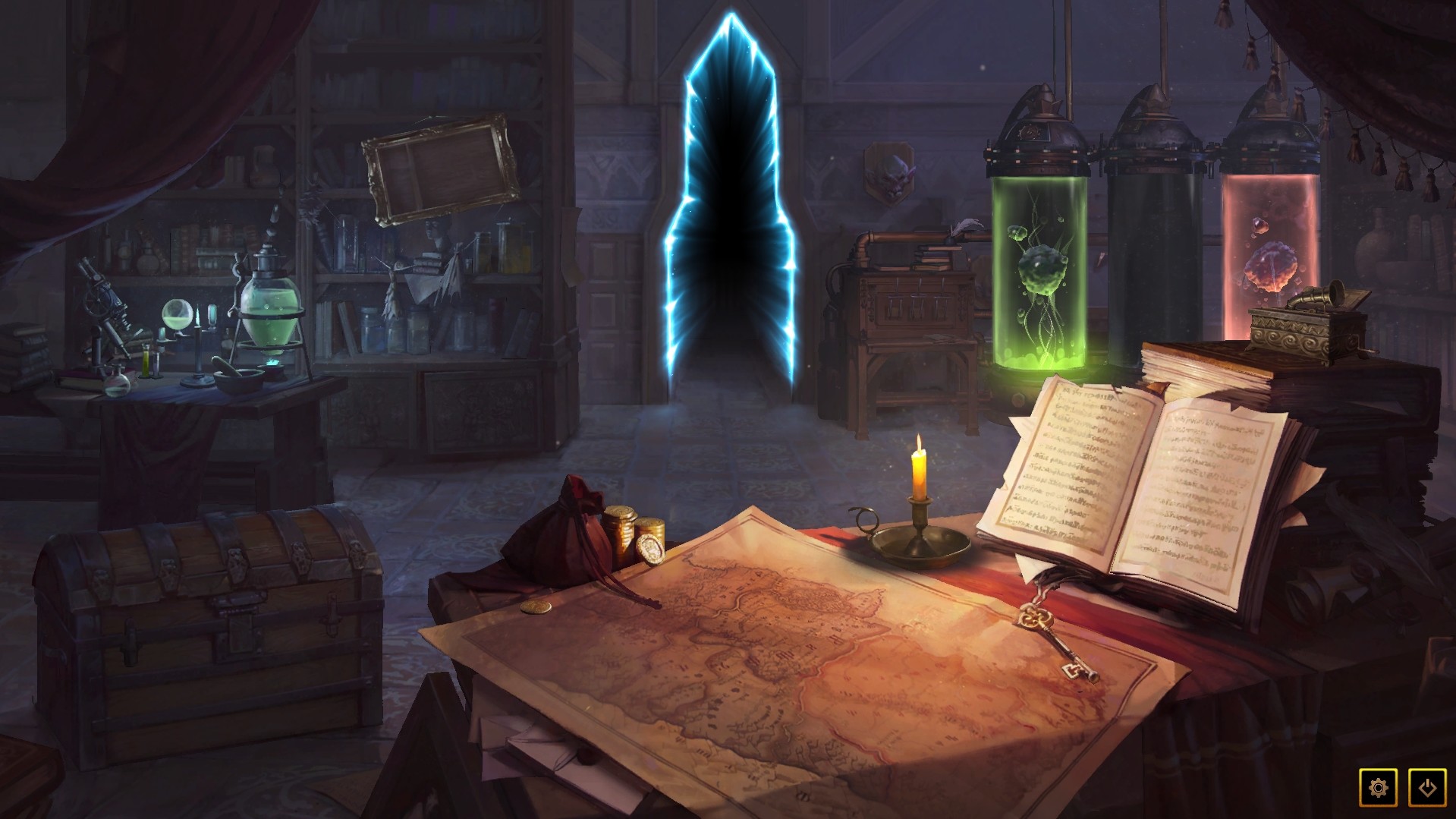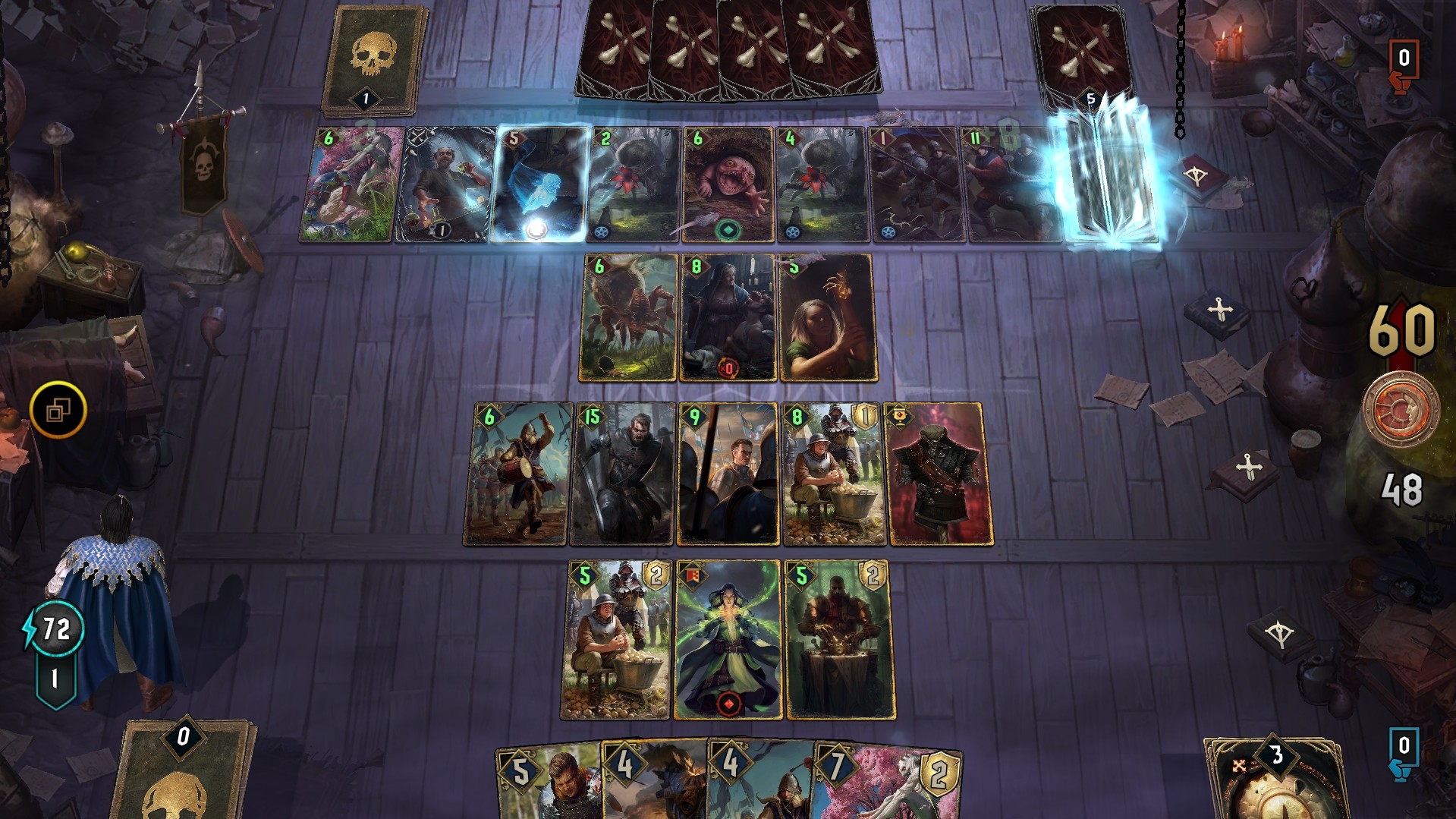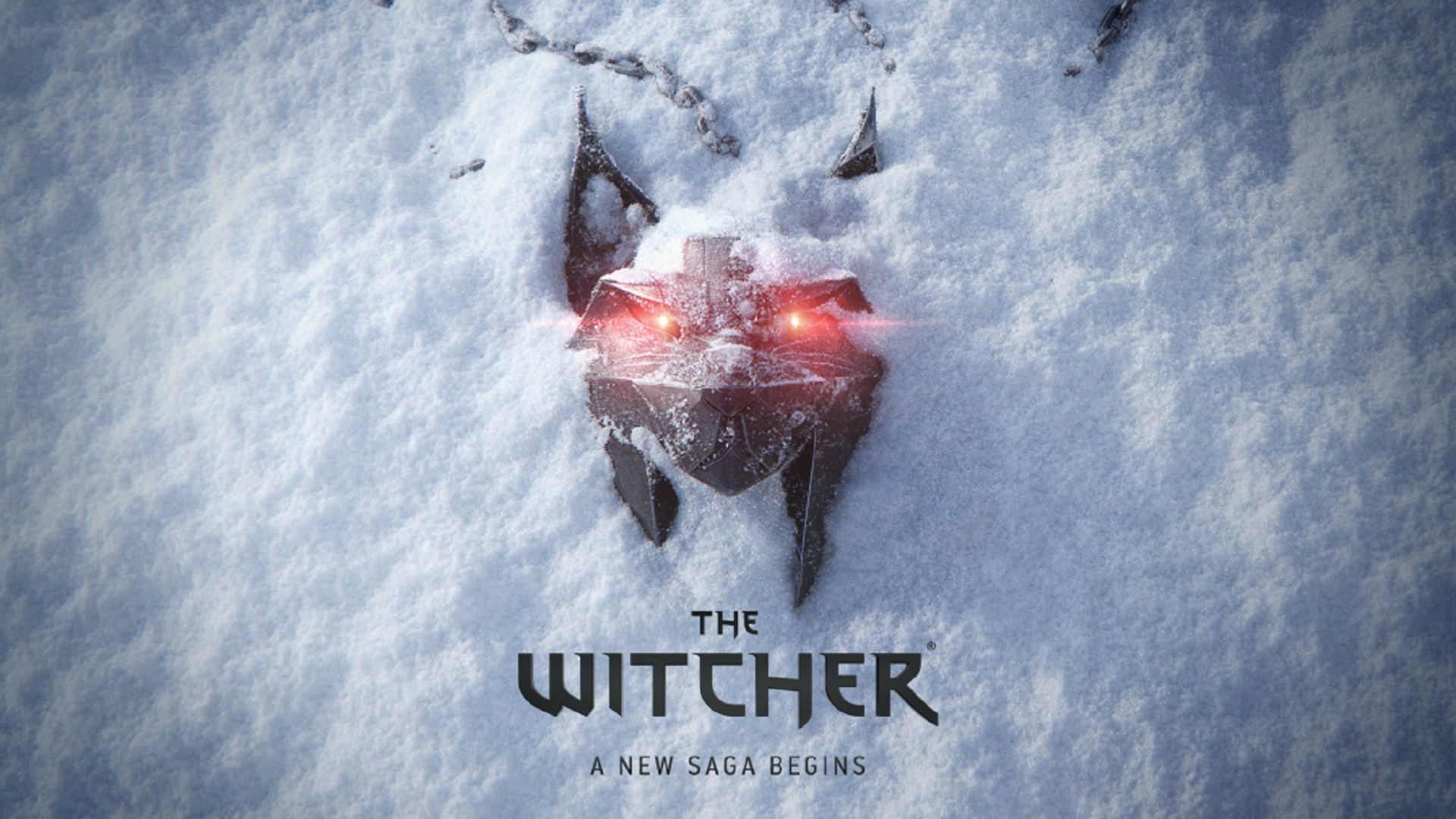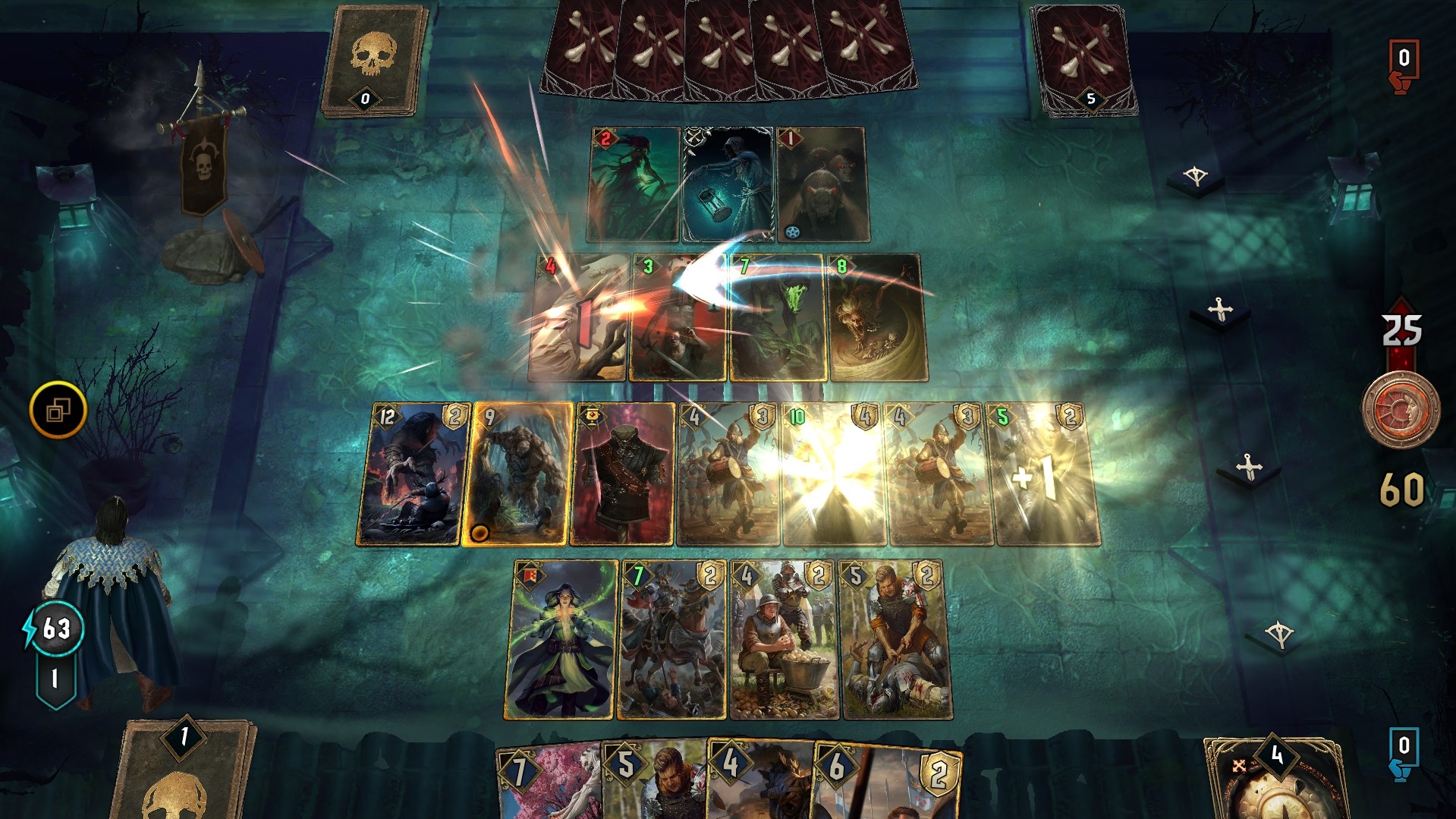A new Witcher game came out last week, and it could last you until The Witcher 4
Deck yourself

Geralt is but a twinkle in an unscrupulous sorcerer’s eye at the moment when the new Witcher game begins. In Gwent: Rogue Mage, a moreish deckbuilding roguelike from CD Projekt Red, you play as Alzur, the infamous mage whose Frankensteinian experiments resulted in the very first mutated monster slayers.
You won’t benefit from the swordarms of any of the pirouetting, cat-eyed killers who might grace The Witcher 4, however. As you join Alzur, his lab is empty of the mutagens he’ll need to bring his ethically dubious plans to fruition. Your goal, then, is to slice open the throats and bellies of rare creatures and retrieve their monstrous essence.
Alzur starts each run at the western end of a great valley, while the beast of note – a white dragon, for instance, or oversized spider – nests among the mountains, forests, or burnt wastes of the far east. Your goal is to make your way from one side to the other – funneling magical energy from places of power to fuel your spells, negotiating passage with bridge trolls, and most often, battling the enemies who seek to waylay or enslave you. Since this is a roguelite, the success of your enterprise is not guaranteed. Should you lose a single battle, Alzur will be sent cursing back to his lab – his own tail between his legs, and the dragon’s still firmly attached to its abdomen in a distant cave.

While combat is an abstract affair, playing out across the table as a card game, that’s not such a bad thing. Over the seven summers since The Witcher 3 came out, Gwent has grown into a deeply tactical and satisfying CCG. It has taken on a little of Hearthstone’s immediacy, filling the field with soldiers and spells that let you strike at cards directly, with a hefty thwack. Yet thankfully, Gwent has also retained its USP. The lanes on each side have been reduced in number from three to two, but matches are still defined by the interplay between melee and ranged rows – as units hop between lanes, transform their fellows, or displace the cards of your enemy.
You might argue that Rogue Mage and Thronebreaker are the only two Witcher games to have truly great combat
Since Rogue Mage’s fights take place across a single, extended round, Gwent is now less about knowing when to take a loss, and more about the slow-burn synergies you create between cards collected throughout the course of a run. At the end of every battle, you’ll be given the choice between gaining a new card or tossing an existing one – and as every CCG veteran knows, the latter is often the cleverer option when it comes to whittling and refining your core deck.
After a few runs, you might even argue that Rogue Mage – and its sister Gwent spin-off, Thronebreaker – are the only two Witcher games to have truly great combat systems. Sounds controversial, but spend a minute thinking about Wild Hunt’s sub-Souls counters and dodges and you’ll know in your bones I’m right.
Lore to the floor

Where Rogue Mage and Thronebreaker differ is in the depth of their narrative wrappers. While Thronebreaker was a full-fledged RPG, replete with Bioware-style companion characters and story-altering decisions, this new game is a much lighter touch. It’s emotionally centered by the occasional back and forth between Alzur and his possibly-romantic companion, Lily, whose somewhat thankless role as the wizard’s conscience is smartly subverted as the mission rolls on.
Sign up for breaking news, reviews, opinion, top tech deals, and more.
But the prose burns brightly and briefly, dialogue is rare, and your most important choices are always about which cards you lift or leave behind. For the vast majority of a run – I averaged about an hour for my failures, and an hour and a half for my first win – you’ll be peering down at that board, trying to pick out a strategy that will see you through to the end.

Alongside confirmation that CDPR is working on The Witcher 4 came an image of a medallion, which appears to be a clue that the studio is fleshing out a Witcher school previously rooted in fan fiction.
For the sniffiest lorehounds, there is intrigue to be sourced from Rogue Mage’s setting. This prequel is set hundreds of years before the events of the main games, which means that factions alluded to as ancient history in The Witcher 3 are alive and kicking in your campaigns. You’ll fight elves from the lost kingdom of Dol Blathanna (“they track like hounds, run like deer and kill like heartless demons”), and agents sent by the Chapter of the Gift and the Art, the nascent magical rulemakers led by Herbert Stammelford, he of Stammelford’s dust. The man once moved a mountain because it obstructed the view of his tower, so predictably has little time for the disorderly questing of wayward magicians.

Yet this roguelike never truly grounds itself in a time and place, since CDPR stuffs its decks with characters from Geralt’s timeline. It’s a decision that will divide fans, but which I find more than defensible. Every time a familiar image pops up, Rogue Mage pulls on welcome memories made elsewhere in the developer’s catalog.
If I’m going to lean on a card that boosts the healing of an entire lane, I’d rather that card bore the face of Keira Metz, the woman I once picnicked with in an effort to glam up the mud and squalor of Velen. If I’m going to put down an enemy, I’m happy for that foe to be named The Bloody Baron, and to mumble audibly about vodka as he hits the tabletop. There are cards, too, from Thronebreaker’s principal cast, and deep cuts from the books, like Sabrina the teenage (in appearance, if not actual age) witch.
As a consequence, the voices and visages of friends and rivals from Geralt’s past bounce about your head as you progress through Rogue Mage’s substantial challenges. And you know what? There are many worse ways to while away the long wait for The Witcher 4 than reliving the best moments of the series in well-sharpened tactical combat.

Jeremy is TRG's features editor. He has a decade’s experience across publications like GamesRadar, PC Gamer and Edge, and has been nominated for two games media awards. Jeremy was once told off by the director of Dishonored 2 for not having played Dishonored 2, an error he has since corrected.